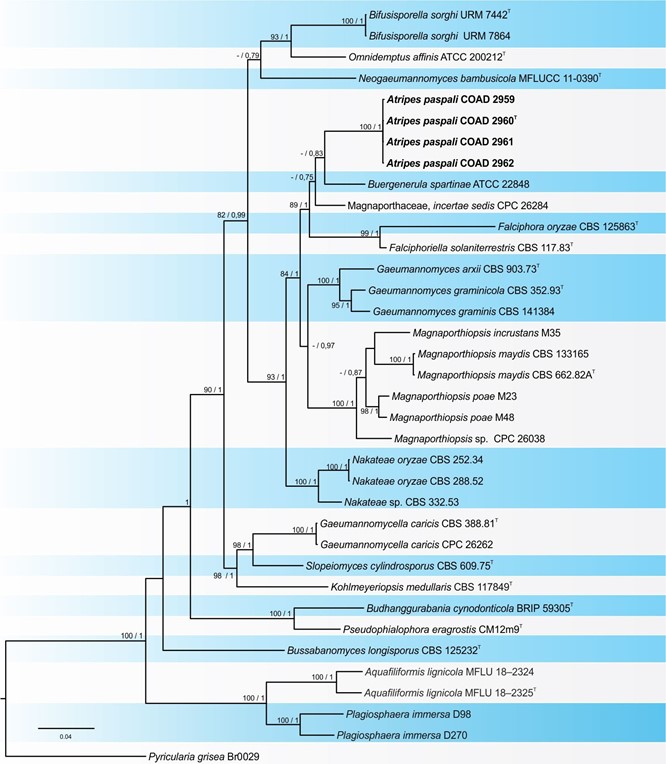Atripes F.A. Custódio & O.L. Pereira
Index Fungorum number: IF 835261; Facesoffungi number: FoF14482
Etymology: Name derived from the combination of atrum and pes, meaning black and foot, respectively, in Latin, referring to the symptoms caused by fungus.
Mycelium septate, branched, smooth, and hyaline to pale brown. Conidiophores are commonly reduced to conidiogenous cells, sometimes macronematous. Conidiogenous cells phialidic, hyaline to pale brown, solitary or grouped, terminal or intercalary, lageniform, straight, or curved with a cylindrical to funnel-shaped collarette. Conidia falcate, hyaline, smooth, and non-septate. Hyphopodia not observed. Sexual morph not observed.
Type species: Atripes paspali.

FI G U R E 2 Phylogenetic tree inferred from concatenated Bayesian inference analysis (ITS, LSU, TEF-1α, and RPB1 sequences) of 35 members of the Magnaporthaceae family. Bootstrap values above 70% and Bayesian posterior probabilities above 0.70 are indicated above the nodes. The tree was rooted with Pyricularia grisea Br0029. The bar represents the number of changes in the nucleotide sequence of each 100 bp. The isolates obtained in this study are highlighted in bold
Species
